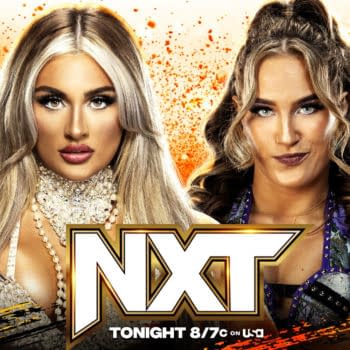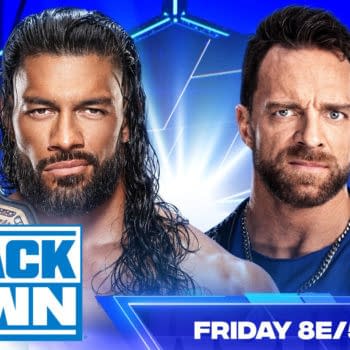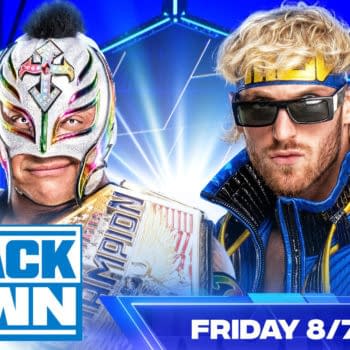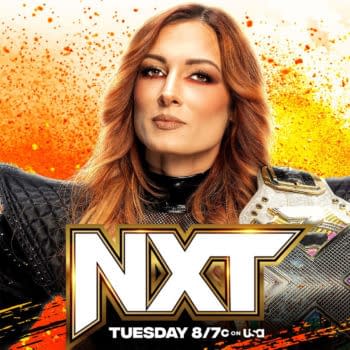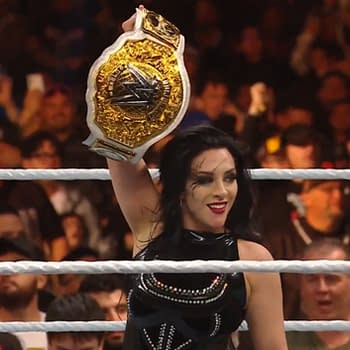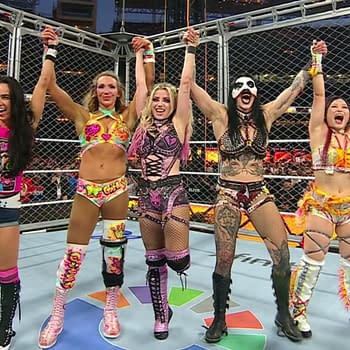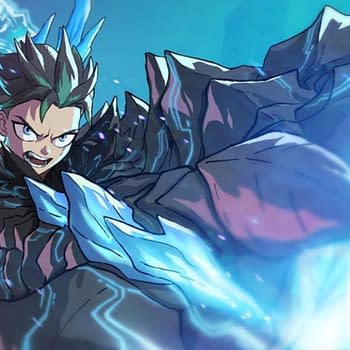Posted in: ABC, Apple, DC Universe, streaming, TV | Tagged: ABC, adam west, Batman, batman tv, burt ward, dc comics, dcu
Batman 1966 Saved The Dark Knight, Making Him The Top Superhero
Let's take a look back at the birth of "Batmania" with the 1966 Batman TV series, which debuted on this day 57 years ago on ABC.
Does any fictional character have as broad a spectrum of representations as Batman? In comics alone, we've seen him span the gamut from dark pulp vigilante to rocketship-piloting 1950s Sci-Fi madcap hero. We've seen him use a handgun to kill vampires and mobsters while also being an upstanding moral do-gooder who would never take a life. Since his debut in 1939, we've seen Batman do it all and even in different colors. But in the mid-1960s, sales figures suggested people had seen more than enough of Batman and were pretty much done with him. That is until ABC decided to take a chance on bringing the Caped Crusader to primetime TV in a big new live-action show. On this day in 1966, "Batmania" was born, and the world of Batman and live-action superheroes has never been the same again.

When Batman debuted on TV 57 years ago today, the comic series he was born in was in a sales free-fall, largely the result of the oppressive and creatively stymieing Comics Code Authority, which was created in 1954 to enforce guidelines on comic books they deemed to be "offensive" or "corrupting" of the nation's youth. Batman and Robin were among the main targets of Frederic Wertham in his book Seduction of the Innocent, which led to public hysteria and Senate hearings that resulted in the creation of the Comics Code Authority. As a result, the Dynamic Duo's adventures consisted less of dodging gunfire as they solved murders and realistic crimes while fighting mobsters and psychopaths and instead found them in more outlandish and completely fictional settings where would be involved in decidedly more nonviolent situations. The dark crime-filled streets of Gotham City were often traded for outer space and the Joker was traded for Bat-Mite.
Things started to change when in 1964, DC Comics editor Julius Schwartz demanded Batman be taken back to his more original elements, and this silliness was largely removed from the books. Batman and Robin were to go back to being costumed crime fighters with secret identities and a rogues gallery. Luckily for them, at the same time, ABC and 20th Century Fox were producing a new TV series aimed at bringing Batman to the forefront of 1960s pop culture.
The show was largely the brainchild of William Dozier, who decided that if they presented the show in such a way that to adults, the show would be something of a comedy, while to kids, it would be deadly serious, they would have something that captured the entire audience of different age groups. This would be accomplished by leaning heavily into the colorful, zany pop art craze of the 1960s known as camp. By painting Batman with a camp brush, they could create something that brought all of the colorful characters and gadgets from the comics to live action without restraint which would amuse adults with silly dialogue and situations, while to the kids watching, this would see the exact same heroes, villains, and amazing vehicles from the comics pages brought to life.
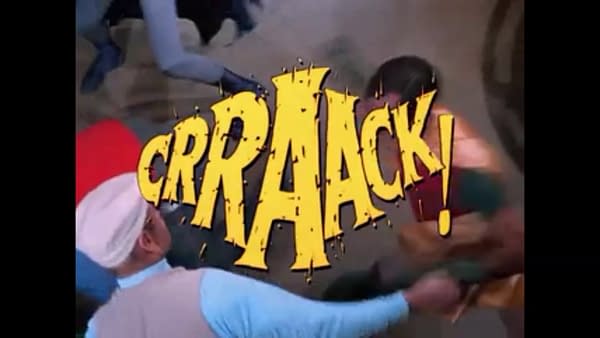
Whether Batman is your preferred flavor of the characters or not, one has to be impressed even today by the sheer scale of commitment to bringing it all to live action. While The Adventures of Superman was a huge hit with kids, it had an admittedly low production value and avoided most of the grander elements of Superman's comics, including his most famous villains. This wouldn't be the case with Batman. Nearly all of the greatest villains from the comics were presented on the show, which was produced in vibrant color. Amazing sets of the Batcave were erected, and Batman's coolest gadgets were brought to life. And then there were the vehicles. The Batmobile was a neat way of getting around in the comics, but George Barris's creation for the Batman TV series officially made it the greatest fictional car in history from that point on, and it was accompanied by the Batboat, the Batcycle, and even the Batcopter, all of which were made as full-size operational vehicles that we actually got to see in legit action.
The casting of the series was something that all live-action shows and films based on comics would follow forever after. While Adam West and Burt Ward became icons as a result of the show, they weren't stars before it. The same couldn't be said for the show's variety of villains, who were almost always cast with a famous star. The hero sold themself, but their opponent would be given a big boost by whoever was playing them that week. This would be a tactic used by Superman: The Movie 12 years later and even more famously with the Batman films starting in 1989.
The show was an instant megahit, immediately becoming a pop culture sensation and crowned "Batmania." Merchandise, magazine covers, a theatrical film, haircut styles, and even a dance craze were born out of the show, bringing Batman from being a silly comic book character for kids to a big iconic property on the level of James Bond.
It was at this point that Batman became serious business. Yes, the show was campy and silly, certainly more so than the adaptations that would follow. But this was the first time the Batman property firmly established itself as the pop culture titan of all of superherodom. This was the first time it felt like you couldn't walk down the street in New York without seeing something Batman-related. There are obviously other superhero megahits and films that grossed more, but when something Batman-related is on top, like in 1966, 1989, and 2008, it's an event that engrossed everything, and that all started here.
With Batman's descent into grim darkness in most people's minds since the 1980s, you would assume this show would be something of an embarrassment, but that hasn't been the case. While at one point there was definitely opposition to it, especially in the 1990s, over time, fans and Hollywood have come to open their minds to it and realize just how important and game-changing it was.
Without this campy show, there are no dark, serious, respected Batman films. It's even possible, if not likely, that the comics would have been canceled if this show hadn't come along right when it did and launched Batman into the stratosphere in popularity. Were there "better" adaptations of the character? That's largely up to your own taste and possibly what generation you're from. But was there a more important one that changed not only the character's fortunes but also that of all other live-action superhero adaptations that followed? That's a much tougher debate, and certainly, at the very least, 1966's Batman belongs on the list of importance with Richard Donner's Superman and Tim Burton's Batman in that without these productions, we don't have the glut of superhero films and TV shows we have today.
You can watch Batman now on Amazon Prime Video and Apple TV.





